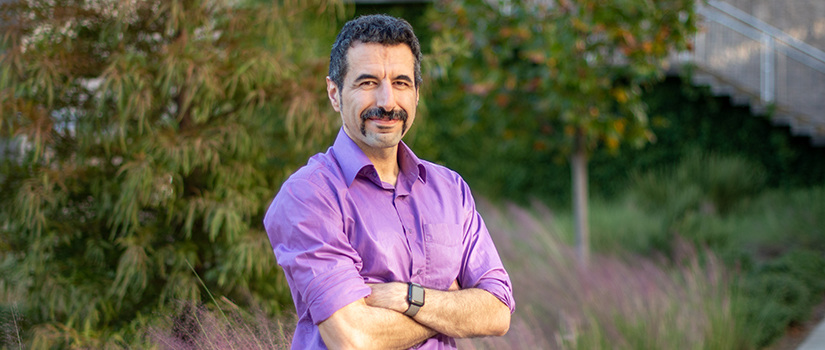UofSC to develop AI-based autonomous systems for space missions
By Grace Farrar | November 6, 2020
As NASA and other space exploration organizations continue sending spacecraft missions to the outer solar system, they don’t have time to wait for technology to keep up. That’s where Pooyan Jamshidi and his collaborative team come in.
Jamshidi, an assistant professor of computer science and engineering, was selected for a $250,000 NASA Resource Adaptive Software Purpose-Built for Extraordinary Robotic Research Yields - Science Instruments (RASPBERRY SI) grant. The two-year grant was only given to two out of the 17 submitted research proposals and will use artificial intelligence to increase the autonomy of space missions.
I personally see it as a once in a lifetime chance to make an impact, a real impact, beyond the research environment.
-Pooyan Jamshidi, Computer Science and Engineering
Currently, human supervision is needed to fix problems that arise on many spacecraft missions. This can significantly slow down data collection, especially on missions to the outer solar system. The aim of the project is to use machine learning to prepare spacecraft to repair and adapt themselves in the event of “unknown unknowns” so that they can better cope with uncertainties in the outer space environment.
“We want these systems to be adaptable to the environment, to update themselves and to basically sense the environment and somehow synthesize plans to reconfigure themselves,” Jamshidi says. “We need to develop technology that really synthesizes these unknown situations as well as coming up with a plan to change the lander itself on the fly.”
This project is a collaborative effort between researchers from Carnegie Mellon University, University of York and doctoral candidates from the University of Arkansas and the University of South Carolina.
“It's always great to have more diversity in your team. If you have people from the same discipline and from the same institution, then an important aspect of the research may go unnoticed, like how the scientific goals can be implemented with the engineering goals,” says Ellen Czaplinski, a doctoral candidate at the University of Arkansas and a science consultant for the project.
In order to be successful, the developed technology would need to pass rigorous tests. A simulated environment at NASA’s Ames Research Center and a physical lander at the Jet Propulsion Laboratory (JPL) will be subject to “fault injections” to determine how the intelligent autonomy being developed by the team will deal with real uncertainties.
“Not only are we going to develop autonomy components, but we will also contribute to the test platforms as well,” Jamshidi says. “It is a kind of joint work, a very close collaboration with NASA teams, both at the Ames Research Center and JPL which makes it very interesting.”
If successful, this research could be used in outer solar system missions on ocean worlds like Europa or Enceladus. By increasing autonomy and preparing for unknowns, spacecraft missions will be able to go farther distances and collect more data.
“I personally see it as a once in a lifetime chance to make an impact, a real impact, beyond the research environment,” Jamshidi says.
More about the RASPBERRY SI project:
The RASPBERRY SI team consists of David Garlan and Bradley Schmerl from Carnegie Mellon University, Javier Camara Moreno from the University of York, Matt DeMinico from NASA GRC, Ellen Czaplinski and Katherine Dzurilla from the University of Arkansas, and Pooyan Jamshidi and Jianhai Su from the University of South Carolina. The team works closely with Khalil Michael Dalal and his team at NASA Ames and Hari Nayar and his team at NASA JPL. Carolyn Mercer, the ARROW program manager at NASA, provides guidance for the RASPBERRY SI team during the execution of the project.
The grant is part of NASA AISR’s Autonomous Robotics Research for Ocean Worlds (ARROW) program, whose goal is to develop autonomy systems to significantly increase the robustness and productivity of future ocean worlds’ lander missions. RASPBERRY SI leverages software and algorithms developed under the DARPA BRASS (Building Resource Adaptive Software Systems) program, which was successfully completed in December 2019.
